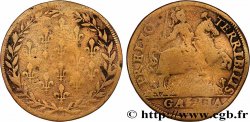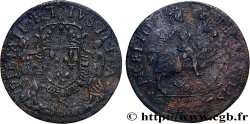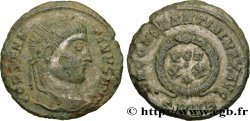Obverse
Obverse legend : PIETATE ET IVSTITIA À L'EXERGUE : 1565.
Obverse description : L'écu de France couronné entre deux colonnes cannelées; au-dessus, deux C croisés sur deux palmes ; en haut, une draperie d'où pendent les Tables de la Loi, un arc et un carquois.
Obverse translation : Avec piété et Justice.
Reverse
Reverse legend : VERBVM. TIMORE. A L’EXERGUE HERCVLES.
Reverse description : Hercule debout de face entre deux vaincus accroupis, les mains liées derrière le dos.
Historical background
CHARLES IX
(05/12/1560-30/05/1574)
Born in Saint-Germain-en-Laye in 1550, son of Henri II and Catherine de Médicis, Charles IX succeeded his brother François II in 1560, at the age of ten.. His mother therefore exercised the regency, and his cousin Antoine de Bourbon the lieutenancy general of the kingdom.. His "reign" began with the Estates General meeting in Orléans in December 1560 - January 1561 and the colloquy of Poissy (October 1561), which allowed the confrontation of Catholic and Protestant ideas.. In January 1562, the edict of Saint-Germain gave the Reformed almost freedom of worship outside closed towns.. The civil war between Protestants and Catholics began with the massacre of Wassy (March 1562), where the Duke of Guise killed Reformers gathered in a barn. In response, the Prince of Condé took up arms and seized several towns. Forced to take sides, Catherine put herself at the head of the Catholics. Massacres answered massacres and Protestants desecrated churches and tombs. All of France was soon ravaged by the troops of each other. At the battle of Dreux (December 1562), Guise gave victory to the Catholic camp, but he was assassinated a few months later, in February 1563. The edict of pacification of Amboise, in March 1563, was negotiated by Montmorency, for the Catholics, and Condé, for the Protestants. It gave freedom of worship to nobles and in a city by bailiwick. Charles IX was proclaimed of age in 1563 and his mother therefore tried to restore royal authority. The ordinance of Moulins (1566) notably diminished the power of parliaments and governors. To restore harmony, the queen-mother took her son on a long tour of France (1564) and led a brilliant court life.. Dissatisfied with the rapprochement of royal power with Spain, dissatisfied with the application of the edicts, the Protestants planned to seize the person of the king. The court took refuge in Meaux then went to Paris (September 1567). After a brief respite, the disorder and the massacres resumed with renewed vigour.. The Protestants blockaded Paris and fought the indecisive Battle of Saint-Denis (November 1567), where Montmorency was killed. Catherine's second son, Henri d'Anjou, then took command of the royal armies.. Peace was signed at Longjumeau in March 1568: the provisions of the Edict of Amboise were restored. In the context of the Tridentine reaction, the Catholic party then began to regain the upper hand. Mendicant and Jesuit orders disseminated the slogans. Armed brotherhoods were created. The Duke of Anjou defeated and killed Condé at Jarnac (March 1569). Despite the help of Protestants from Germany, the Protestants were defeated a second time at Moncontour (October 1569). A new edict of pacification, signed in Saint-Germain, intervened in August 1570: the Protestants received four cities of safety: La Rochelle, Montauban, La Charité and Cognac. The reformed lords reappeared at Court and Coligny became the favorite of Charles IX. Jealous of this competition, Catherine solved the loss of the admiral. Thanks to the marriage of Henri de Navarre, nominal leader of the Protestant party, with Marguerite de Valois, the Catholic party took advantage of the gathering in Paris of many reformed leaders: this was the massacre of Saint-Barthélemy (August 24, 1572). The king and his mother had allowed themselves to be drawn into the affair, where the collective fury made the principal of the two thousand victims.. The war resumed, inexpiable. The South had revolted, with the complicity of Montmorency-Damville, governor of Languedoc. The Edict of Boulogne (July 1573), which gave freedom of conscience and ensured freedom of worship in La Rochelle and Montauban, could not put an end to the war.. King of a torn kingdom, plaything of events, Charles died without male issue on May 30, 1574, leaving the crown to his younger brother, Henry, King of Poland.









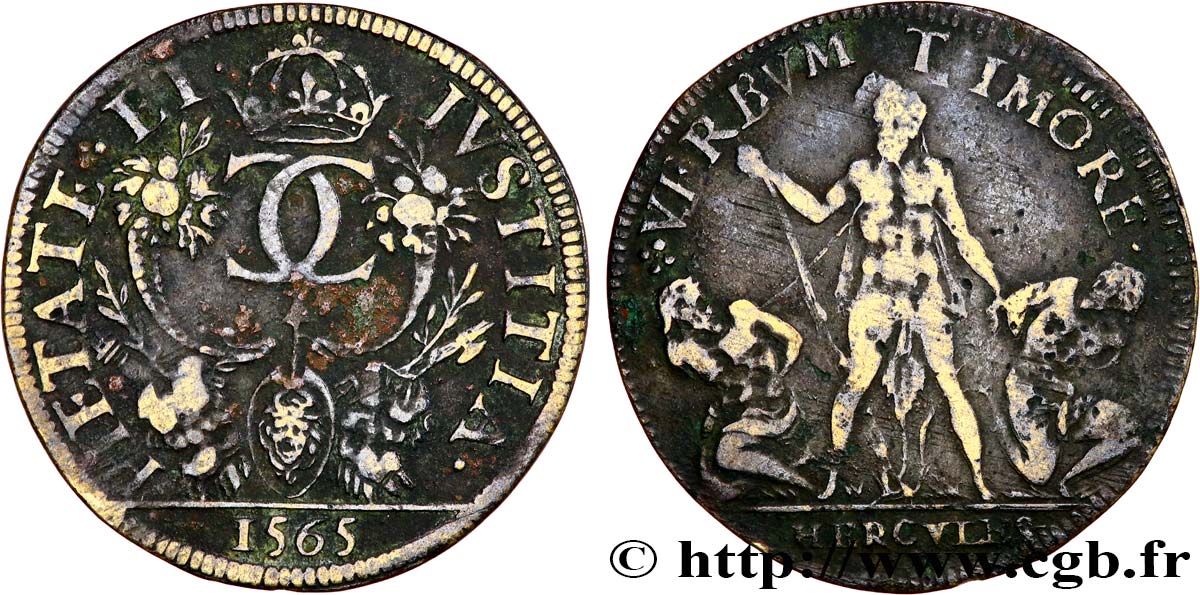
 Report a mistake
Report a mistake Print the page
Print the page Share my selection
Share my selection Ask a question
Ask a question Consign / sell
Consign / sell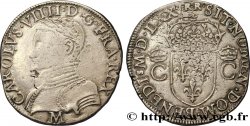
 Full data
Full data
